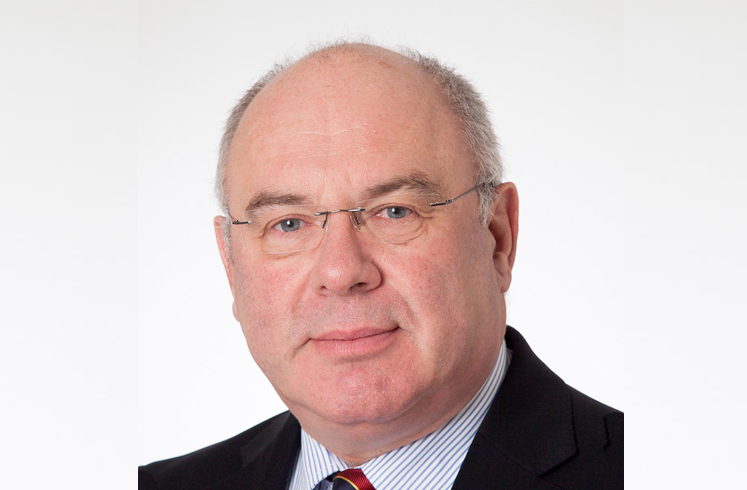
Dilo Group has never ceased to amaze with its innovative nonwoven textile machinery range. The Germany-based group has been setting the benchmarks in nonwoven textile machinery manufacturing for a long time now. Its machinery is playing a key role in the textile industries of over 50 countries globally. In an exclusive interview, CEO Johann-Philipp Dilo spoke at length about the company’s early days, its history, products and solutions, USPs, participation in INDEX and ITMA 2023 and future plans, among others
Founded in 1902, Dilo is undoubtedly the oldest and continues to retain its global market leadership as a nonwoven machinery manufacturer. Can you look back on this glorious history and the key milestones in the history of the organisation?
Dilo Machine Building in Eberbach, Germany, was founded in 1902 by my grandfather Oskar Dilo. He started to supply to local spinning mills, who manufactured upholstery and mattress pads, machines for fibre preparation, carding and interlacing to process natural fibre and animal hair. After World War II my father Richard Dilo, his brother Oskar and sister Helene continued this business while the machine design was steadily improved. In the second half of the 1950s, the first needle loom was designed which replaced later the interlacing machine for mattress pads.
Through an array of innovations and inventions in the 1960s, 1970s and 1980s, Dilo started its reputation as the specialist for needle looms. Among those were specialty needle looms for circular needling ‘Rontex’ to produce filter material in 1967, in 1968-69 the ‘Di-Loop’ structuring and patterning needle loom for floor coverings, in 1975 the ‘Di-Loft’ machine for lightweight car interior material, in 1979 the ‘Beltex’ process for paper machine felts, in 1983 the ‘Di-Lour’ process and machine with a brush apron to needle random lightweight velours for moulded car parts, the ‘VE 4’, a special drafting frame for the production of geotextiles.

In 1985, we launched the universal needle loom series Di-Loom including our patented rocker-arm-guiding system and ‘Alpa’ needle board was launched in a modular design, large paper makers felt needle looms up to 16 m of working width were begun in 1990 and in 1991 the first needle loom worldwide which reached 3,000 strokes/minute and used carbon fibre composites in needle beams and boards. In 1995, the ‘Hyperpunch’ elliptical needling was launched, in 2007 the ‘Cyclo Punch’ needle loom with circular kinematics including the intensive needling process. Also, in 2007, the ‘HypeLayer’ and ‘DiloLayer’ three-apron-crosslapper were introduced during ITMA which later have reached a true in-feed speed of over 200 m/min for the first time at crosslapping machines.
Parallel to this specific engineering for the needle loom business, Dilo formed Dilo System Group in 1996 with the purchase of shares of Spinnbau, a carding machine specialist, in 2005 majority shares of Temafa Maschinenfabrik GmbH, a specialist for opening and blending equipment – all of this for the purpose of supplying complete nonwoven lines from the general contractor Dilo Systems with a sole responsibility. We also set up subsidiaries in the United States in 1983 and later in Shanghai, Istanbul and near New Delhi to be close to the customers for spare parts, service and sales.
In these 120+ years, can you take us through the beginning of the company’s nonwovens business and its growth over the years?
As mentioned, the needle loom building, our specialty at Dilo, started around 1957. At the time, the company employed approximately 100 associates. Due to the fast development of the production of floor coverings made from needle felts in the early 1960s, Dilo grew with its machine building at a fast pace. In 1964, a new factory in the outskirts of Eberbach was built and soon over 200 employees worked in this specialty business with our innovations marketed worldwide. Around 1980 the turnover was around Euro 10 million. During the 1980s, Dilo supplied complete lines on the basis of partnerships and a consortial structure. In the second half of the 1990s, this business of complete lines had gained momentum and has been developing to become the main sector of our activities today with a sales volume of up to around Euros 100 million in Dilo Group with 450 employees in Bremen at Dilo Spinnbau, Dilo Temafa in Bergisch-Gladbach and Dilo Machines in Eberbach.
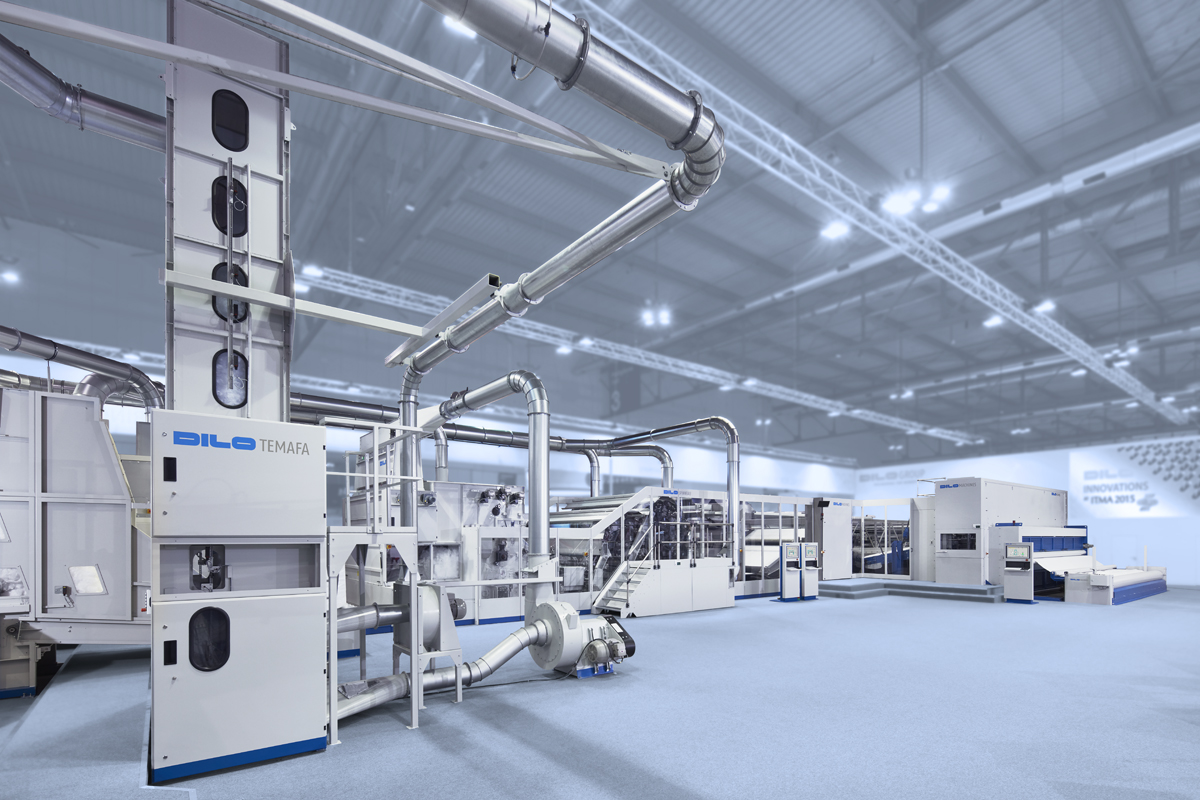
Currently how is business at Dilo, particularly after the impact of the pandemic and still under the impact of war?
Since the worldwide financial and banking crisis of 2009-10 and after the second crisis of the pandemic and now the war in Ukraine, we have experienced great success and growth but also setbacks have become normal. Yet despite these negative influences, the world economy for nonwovens and nonwoven machinery remains quite stable because of the average growth rate of the consumption of nonwoven material in the many areas of nonwoven applications like floor coverings, car interiors, general technical textiles, filtration and geofabrics, just to name a few.
Currently what is the manufacturing infrastructure of Dilo globally, key manufacturing locations, capacity and the number of people who work for the group?
Dilo is sourcing manufactured parts and materials foremost in Germany with some exceptions in neighbouring European countries. Dilo Spinnbau in Bremen as a carding specialist builds universal and special carding machines for high-speed applications up to working widths of 5.1 m. In our three manufacturing locations and foreign subsidiaries together 450 people are employed. The capacity to supply complete lines comprises deliveries for up to around 15 to 20 medium-sized nonwoven plants per year.
Currently, what are the products and solutions offered by DILO for the global market? Can you elaborate on the solutions offered both for the technical textiles and nonwoven industry?
On the basis of our comprehensive machine program complete lines are manufactured, including fibre preparation components from Dilo Temefa for opening and blending, fine opening, cleaning and decortication of natural fibres; dedusting, filtering and air conditioning through our Airsystems Engineering department is offered. Universal and special carding machines from Dilo Spinnbau as well as batt forming through high-speed crosslappers from Dilo Machines are the core of the web forming part of a universal or special Dilo line to be completed by our range of special and universal needle punching machines from small (laboratory R+D equipment) up to very large paper machine felt equipment to reach 16 m of working width.
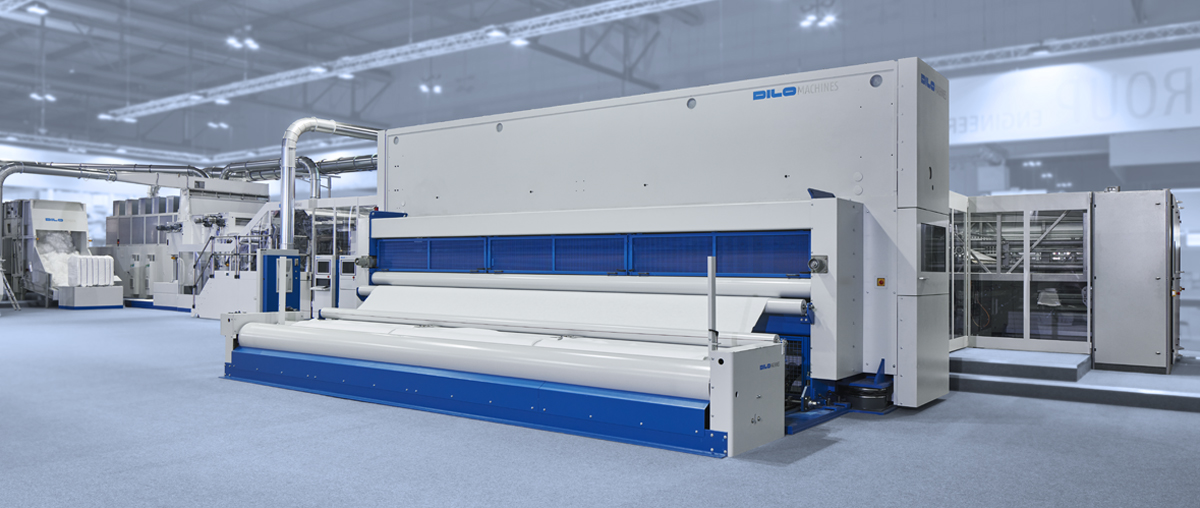
From this large and comprehensive range of machinery, complete lines are engineered on the basis of customer requirements, which we supply worldwide to many different nonwoven sectors with products out of any type of fibre material, natural, manmade, organic and mineral fibres, short and long staple, the complete range of very fine to very coarse fibre and a large range of mass per unit area from e.g. ca. 30 g/m² to ca. 3,000g/m².
Through this enormous range of parameters an almost endless array of different nonwoven products is created, foremost needled but also thermobonded, thermofused orimpregnated, used in many important applications such as floor coverings, automotive interiors, insulation for heat and noise, filtration media, geotextiles, synthetic leather, industrial and household wipes, roofing material, paper machine felts and various other purely technical felts including those of recycled carbon fibre in industrial applications.
Which are the key global markets in which Dilo has a strong presence and the emerging markets which are promising for the future?
Dilo has a long-term presence in the United States since 1983 with a successful subsidiary, Dilo Incorporated, for spare parts and service. The United States is a large market for needled nonwovens. China is a very active market since 1980 for Dilo machines and complete Dilo lines since the 1990s. It continues to be important despite the setbacks during the pandemic and remains one of the leading and promising markets. Germany, our national market, and Europe as a whole is of course highly segmented by specialties but covers also high volume fields of needled material or material from other consolidation techniques and has been a valid force for new developments in many areas. Dilo Group started a sales and service subsidiary in Gurugram near Delhi in 2018. This move on the Indian market reflects our impression that there is a large potential in India also for the consumption of more nonwovens in the future.
We are weeks away from the much awaited INDEX and ITMA. What can visitors expect from Dilo this year at both these shows? Are you planning any new launches in terms of new products and technologies that would define the future of the industry?
At a booth size of ca. 750 m² Dilo will exhibit at ITMA for the first time the brand new development ‘Micropunch’, an advanced intensive needling line, which is the latest accomplishment from our R+D departments, including fibre preparation from Dilo Temafa, carding from Dilo Spinnbau and three high-speed MicroPunch specialty needle looms. This line can produce needled lightweight material for the hygiene market and the wipes business having weights of 40 g/m² up to 100 g/m² and more. The hygiene sector in nonwovens is the largest with almost 30% share. Currently about 85% of lightweight nonwovens for wipes applications are hydroentangled.
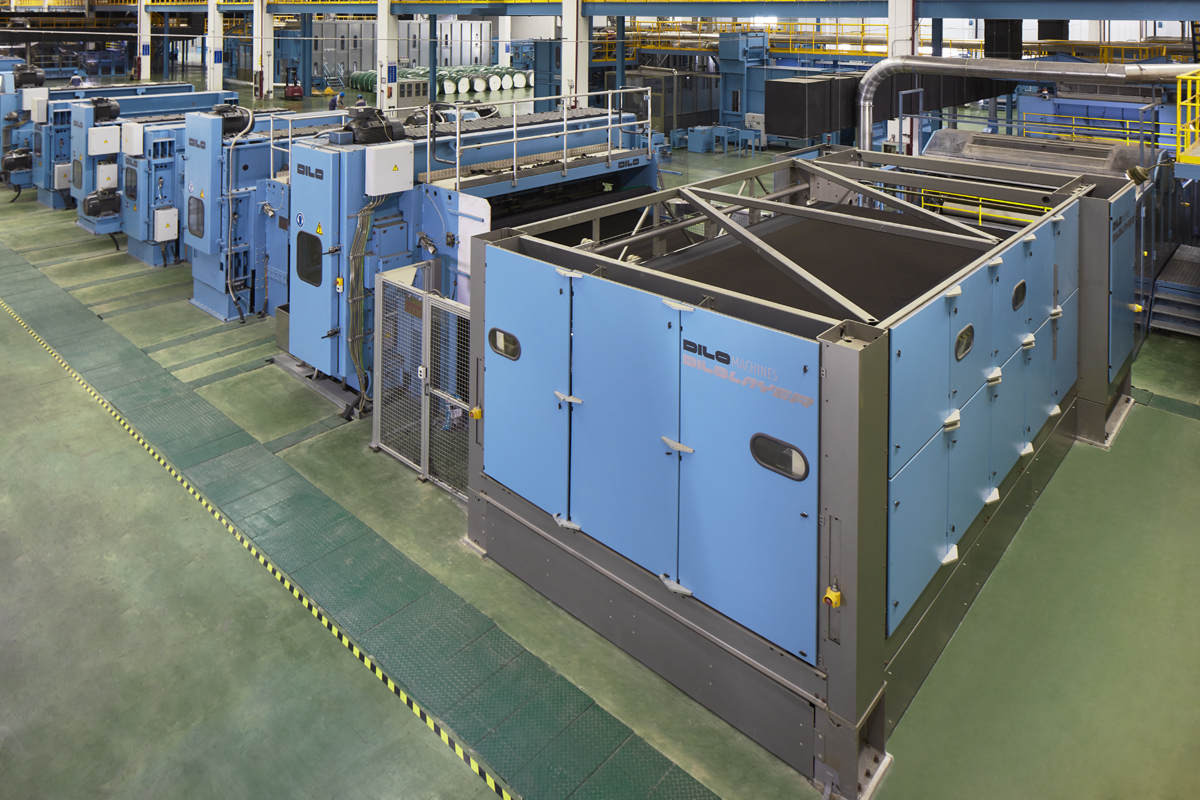
In light of the requirements for sustainability, energy and water savings and a reduced output of CO2, the new needling process MicroPunch for lightweight wipes, medical as well as technical applications provides great potential. MicroPunch is a valid alternative to hydroentangling, a breakthrough to reduce the installed power of such a line by about 75%. MicroPunch doesn’t consume water and gas which is needed to dry out again the water from hydroentangled material. The new MicroPunch process and machinery is now ready to be demonstrated in public and defines in our opinion an important part of the future of the global nonwoven industry.
MicroPunched products are needled with about 900 stitches/cm² in order to be resistant to wear. A prerequisite for the economics of this process are high density needle boards with an extreme of up to 45,000 needles/m/board where our new needle module X22 including 22 needles per module will allow to change needles extremely quickly. Therefore this mission to provide a highly ecological process for single-use products in the hygiene sector is completed. Details of this new technology were released to the public during INDEX in Geneva in order to prepare the machinery exhibition at ITMA and to attract attention for MicroPunch, a truly green manufacturing process, particularly when biodegradable fibres are applied.
Speaking about Industry 4.0, automation and digitilazation, how has DILO progressed on these aspects? Can you highlight Dilo’s technology roadmap?
In this regard it is worthwhile mentioning that our machines have been automated to a high degree by variable speed drives, sensors and PLCs as early as in the late 1980s using graphical screens for operator’s assistance and guidance. Error messages and production recipes have been included later to administer the operator’s work. For quite a few years, Dilo has been engaged in research and development in the field of Industry 4.0 together with Siemens in order to further improve the level of automation, digitalization and operator’s support. From those research activities some modules have made it into our sales program and are offered and included in our complete automation and drive package as for example the ‘smart guide light” at the fibre preparation sector, the ‘Dilo Watt’ software and sensor regulated surveillance of the fibre transportation which can save electric energy at the fibre transport fans of complete nonwoven lines. Pneumatic conveying of fibre is consuming about half of the total electric energy of a line.
In addition, our error- message-line-monitoring-system is detailed further in order to support the operators and raise uptime of our lines. Our CV1 system for regulating the batt evenness in the crosslapper saves a lot of fresh fibre material, the most important cost factor in textile industry and reduces fibre waste. Dilo continues to do research for higher degrees of automation in various modules to be included in our lines accessible by key personal through the cloud and allow a remote monitoring system of line performance.
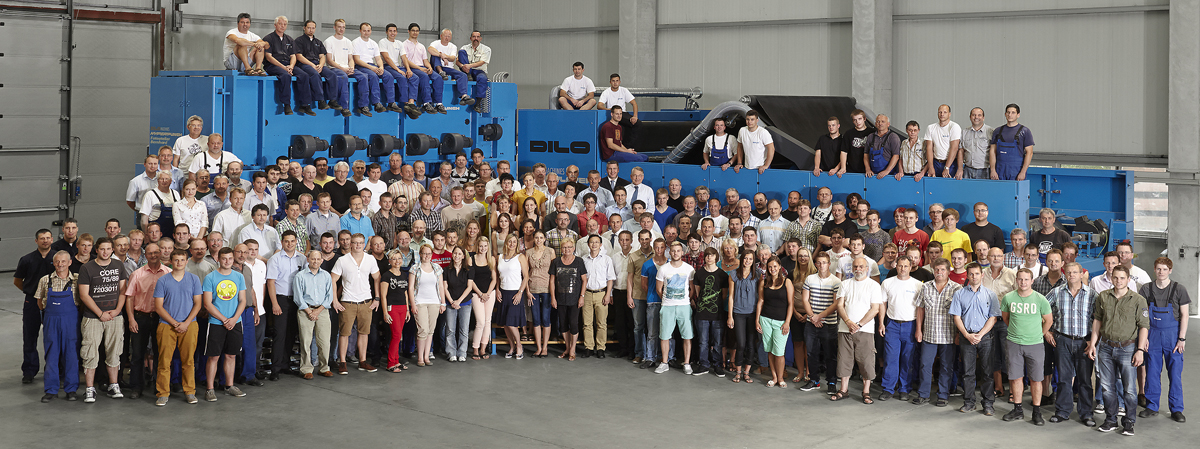
The whole range of production parameters and notifications can be visualised in dashboards in the Siemens Mindsphere cloud. We also use Mindsphere applications to display the maintenance schedule and corresponding manuals. Our digital needle board management system can also be integrated in the cloud as well as the energy consumption of the nonwoven production. Another important aspect of our Industry 4.0 concept is predictive maintenance. We offer several solutions to reduce downtime by vibrations sensors and motor monitoring. The operators are supported by our HMI, which gives guidance on how to handle notifications. The start-up of the line usually needs the most attention of the operators.
For this complex process we are preparing our ‘Smart Start System’. Furthermore, AI solutions are under development to give recommendations to the operator on how to optimize the nonwoven quality. All in all, however, the research and launch of new Industry 4.0 modules is an evolutionary instead of a revolutionary process. When the status of Industry 4.0 is observed in the automobile industry for example at driver assistance systems we are still not yet in a position where completely automated drive systems are available or in use. A lot of assistance is provided, yet a car use without driver is still far ahead of us.
Sustainability is no more a fancy word. Sustainable manufacturing is the urgent need of the hour. What is Dilo’s philosophy and how are you supporting your customer’s sustainability mission and goals?
As mentioned before, in the context of intensive needling and MicroPunch, Dilo is in full support of this general philosophy which has attracted worldwide attention in order to save our natural environment and reduce the consumption of limited resources. As in the example of a typical personal care wipe, this lightweight and fine fleece is disposed after use, burned or dumped. We should better work for products to apply foremost biodegradable or ‘green’ materials which do not pollute nature. Therefore, a lot of attention is required to formulate newer production plans to make use of homogeneous fibre material without blending natural or semi-natural fibre (viscose) together with plastics, like man-made organic fibre in wipes.
Dilo will start to offer MicroPunch lines during this year in order to also make a contribution in this regard.
Given that Dilo is in a highly competitive market place with many local and global manufacturers offering similar products and solutions, why should a customer consider Dilo for his requirement? What are your key strengths and advantages?
Dilo is a mid-sized family business and run in the third and fourth generation with the presence of my two daughters who have an engineering background and are part of the managing board. Therefore our vision is always long-term. Long-term reliability of our customer relations, our customer focus, our support for our machines with excellent service and supply of spare parts, machines of renowned quality and durability including high productivity and efficiency in order to secure the economics of this prime technology at our customers are the factors that contribute to our global reputation. We are considered as a market leader by a strong contribution to the industry with a large array of innovations and inventions as outlined earlier. Our focus lies in addition on complete solutions at our complete line business and we are always aiming for customers’ satisfaction.
Finally, 120 years and marching ahead, what is the vision you have set for Dilo? What is your medium term and long term vision?
So far, Dilo has set the pace for technical and engineering solutions mostly based on staple fibre for market and application sectors of durables in the lower-medium to high weight range. In this context, the robustness and reliability of our technical solutions are widely acknowledged. As mentioned above, however, we have seen that the lower weight and fine fleece range of products, particularly for hygiene, medical and cosmetic applications, hold a very important share. Also strategically, it is time for a move to gain importance with our needling solution in this growing market as well. The fact that this is possible now when needling lightweights at a much reduced energy consumption gives us a strong motivation and an additional basis for continuing our work into a bright future.
Lately, legislation and consumers require generally a move to recycled products e. g. out of garment clippings where through a tearing process fibre material can be extracted and reused successfully. This, however, is mainly a process which normally is associated with a deterioration of fibre quality, namely a reduction of staple length. Recycling therefore, so far, has been considered as degrading the quality of products, when reusing post production or post consumption waste. Dilo has now made arrangements together with our partners Dell’Orco and Villani and Technoplants in Capalle, CampiBisenzio (FI) and Pistoia who are specialists for a high quality in the process of reclaiming fibres from garment as well as applying a specialised aerodynamic web forming process to run this particular fibre material for applications where a high thickness at a high production rate is needed.
Together with the machinery program of Dilo Group for opening and blending, carding, crosslapping and needling, a full package of a modular combination of the various web forming and consolidation technologies including air through-bonding will be offered now with the beginning of INDEX in Geneva. Low energy consumption, no water and little gas consumption, high efficiency in the use of fibre material including recycled fibre and natural fibre is a strong desire when we adapt to future requirements and sustainability.